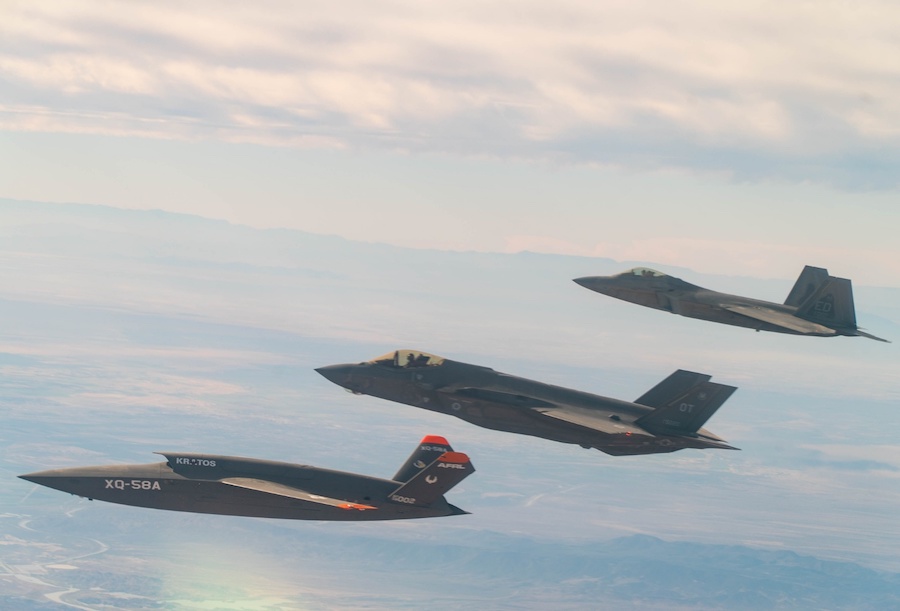USAF, AFRL, fly manned, unmanned aircraft in gatewayONE test

On December 9 the US’s joint force took another step toward achieving a military Internet of Things (IoT) when two 5th-generation aircraft overcame long standing connectivity limitations to share actionable operational data in their native secure digital “languages” for the first time.
This test was the latest demonstration of the transformative warfighting impact of the open architecture underpinning the Advanced Battle Management System (ABMS).
The joint effort included a US Marine Corps F-35B and an Air Force F-22 and F-35A flying with an attritableONE XQ-58A Valkyrie for the first time, at Yuma Proving Ground, Arizona.
Lt. Col. Kate Stowe, gatewayONE program manager at the Air Force Lifecycle Management Center (AFLMC), set out with 18 test objectives and successfully achieved nine.
“Testing is all about pushing the limits of what’s possible, finding out where the toughest challenges are, and adapting creative solutions to overcoming difficult problem sets,” Stowe said. “The real win of the day was seeing the gatewayONE establish a secure two-way translational data path across multiple platforms and multiple domains. That’s the stuff ABMS is all about.”
ABMS is the Air Force and Space Force’s priority program to develop the military’s first Internet of Things and is the services’ primary contribution to Joint All-Domain Command and Control, a Defense Department-led effort to securely connect all elements of the U.S. military–every sensor and shooter–across land, air, sea, space and cyberspace.
Fifth-generation fighters are typically limited to communicating with each other and to command and control centers via legacy tactical data connections, the Multifunctional Advanced Data Link for F-35 and Intra-Flight Data Link for the F-22. Not only can gatewayONE translate between those formats, in this test for the first time it moved data directly into the cockpit instead of relaying it first to an operations centre or tactical ground node,.
Additionally, the test pushed the position data of each platform outside of the aircraft’s close-proximity formation through gatewayONE, which enables battle managers on the ground or in the air to better orchestrate operations. The gatewayONE payload also passed tracks or cues from ground operators to both fighters and passed a cue from the F-35A to the F-22 for the first time. These bi-directional communications pathways occurred in the platforms’ native digital “languages” and the data was displayed through the aircrafts’ organic systems.
The December 9 flight test included the attritableONE platform, the XQ-58 Valkyrie UAV, which successfully conducted a semi-autonomous flight alongside the F-22 and F-35s for the first time. The gatewayONE payload was integrated into the Valkyrie for this trial to conduct an initial test of gateway capabilities from an attritable platform; however, shortly after takeoff, the communications payloads lost connectivity and those test objectives were unable to be accomplished.
